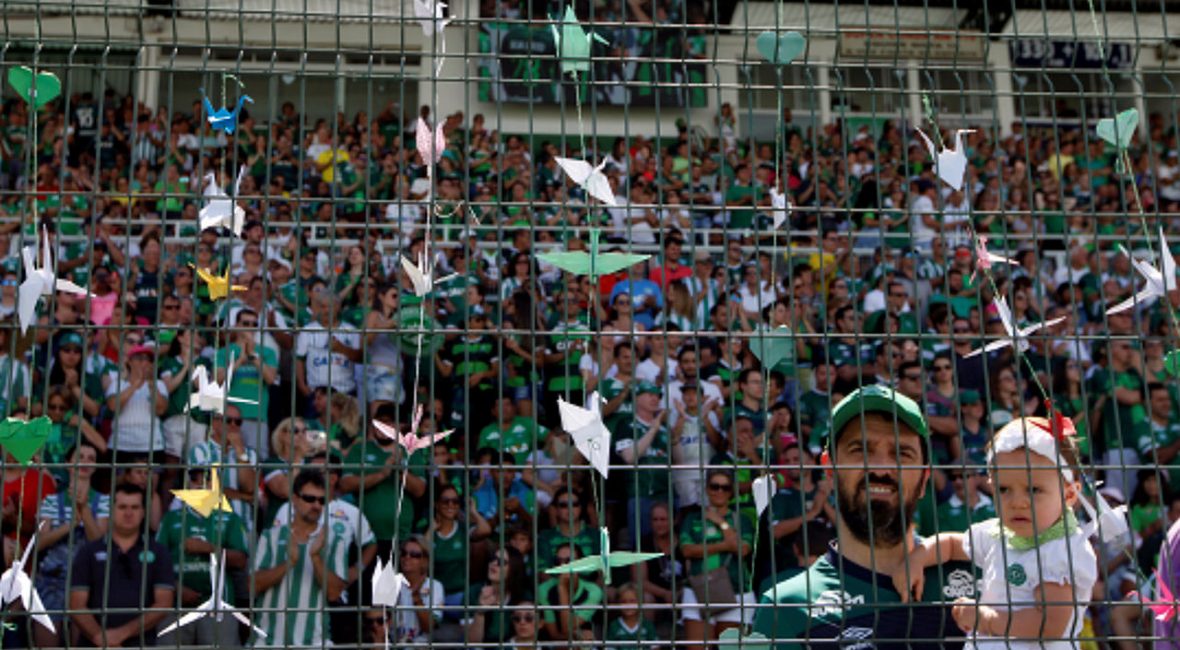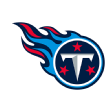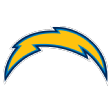On a late Sunday afternoon in January, his frustration peaking, a Las Vegas bookmaker left his office and headed home in the middle of a tight divisional playoff game between the Pittsburgh Steelers and Kansas City Chiefs.
It had been a rough couple of weeks for the house, and the level of the bookmaker’s discontent was palpable through his cellphone, as he drove and grumbled about the point spread that had attracted lopsided action on the underdog Steelers.
“I have no [expletive] idea how this game even got to [Kansas City] 2, 2.5 much less,” he said. “It’s ridiculous that the Chiefs are even the favorites in this game. We need them really bad.”
The Steelers won 18-16, and, for the second time in nine days, Las Vegas sportsbooks had lost millions.
Some books declared Sunday, Jan. 15, their worst day ever, the culmination of a rare hot streak by the betting public that produced massive parlay liability and had some bookmakers in no-win situations even before the Steelers and Chiefs kicked off.
By the time the playoffs were over, the betting majority had gone 9-1 against the spread, and Nevada sportsbooks had lost $8.25 million on football (college and pro combined) in January — the second-most costly football month during the season ever for the books. According to the state’s gaming control board, only Nov. 2005 (negative $11.2 million) was worse for the books than Jan. 2017.
“We weren’t sweating it,” Jay Kornegay, vice president of the Westgate SuperBook, said. “We were more just shaking our heads that things weren’t going our way. But we’re not looking for sympathy. We know things will turn around.”
Sympathy for the bookmaker is a rare commodity, and history shows that, by the nature of the game, things due to tend to work out just fine for the books in the end (college football, by the way, was excellent for them this past season). But it was an expensive start to 2017, after what had been a relatively dicey final two months of the NFL regular season.
Chalk spoke to bookmakers, analysts and bettors to try to figure out just what happened in a strange season for NFL betting.
A rough November for the books
After a typical strong start by the books, the NFL season turned in November. Suddenly, public bettors started winning, hitting parlay after parlay through the end of the regular season.
In November, the books’ hold percentage on football — the amount they keep from the amount wagered — fell to a minuscule 2.10 percent, a four-year low for a football month. Profits from parlays also were down sharply in November and December, 87.9 percent and 72.1 percent year-over-year, respectively.
“Hell, we had, I think, 11 12-teamers [parlays] hit,” Nick Bogdanovich, director of trading for William Hill U.S., said. “I don’t know if we’ve had 11 in the last 20 years hit. It was just one of those years.”
NFL favorites went 135-126 against the spread this past season, not counting pushes. It is the third-best mark for favorites in the last 14 seasons. And 141 games went over the total, with 124 staying under, the third-best mark for overs in the last 14 years, according to sports betting analytics site Betlabsports.com on Sports Insights. The betting majority almost always gravitates to the favorite and over, which makes it a bad combination for the books.
To boot, the New England Patriots, the consensus Super Bowl favorites throughout the season and a public favorite, went 16-3 ATS, tying the 1989 San Francisco 49ers for the best single-season ATS record in the last 40 years. In contrast, the Cleveland Browns, widely considered the biggest long shots in the league and the only team to be underdogs in every game, went a league-worst 3-12-1 ATS.
It got to a point in November and December, where Patriots and whoever was playing the Browns became staples on parlay cards. “And [opponents of] the Rams, and the 49ers,” Kornegay lamented. “It felt like we were giving away a free four-teamer every weekend.”
The lines back him up. From Weeks 7-15, a four-team parlay betting on the Patriots and against the Rams, 49ers and Browns would’ve cashed four times in six possible weeks (one team was on a bye in Weeks 8, 9 and 13). And the Rams, 49ers and Browns each had ATS losing streaks of at least seven games.
The betting public jumped on board, even as point spreads became inflated to a point where sophisticated bettors believed there was enough value to bet the Browns week after week.
“These guys are professionals. They are playing numbers,” Ed Salmons, assistant manager at the Westgate SuperBook told Chalk in December. “You want to gamble against the public, but at some point you’d like to see a team cover. It’s hard to be that bad and not cover, because the spreads get so inflated.”
“I would say 100 percent [the sharps] struggled,” Bogdanovich said.
The Browns finished 1-15 straight up, covering the spread just twice during the disastrous season. For reference, the 2008 Detroit Lions, the only team to go 0-16 in a season, went 7-9 ATS during that campaign.
Bad lines?
The 2016 NFL season did feature some statistical anomalies, but they didn’t lead to more inaccurate point spreads than usual:
• The average margin of victory, including the playoffs, was 10.4, the third-lowest in NFL history, behind only 1935 (10.2) and 1932 (9.1). “Keep in mind that in the 1930s, teams combined for about 23 points per game, so nine- and 10-point margins were huge,” said data analyst Greg Guglielmo, a data analyst proprietor of ELDORADO, an analytics-heavy sports site. “The average margin of victory in 2016 was the lowest in history, relative to total points per game.”
• In the second season since the NFL moved the extra point back to the 15-yard line, kickers converted 93.6 percent of attempts, the lowest since 1979. There were 105 two-point conversion attempts, the most per game since 1998 and more than double the amount attempted in 2011. According to Guglielmo, these factors helped produce the most non-traditional team final scores (15, 18, 19, 22, 25, etc.) in league history.
• While non-traditional scores increased in 2016, the most common margins of victory remained, in order, 3, 7, 10, 4, 6 and 14. In 2015, nearly 17 percent of games (43 of 256 games) were decided by three points; on 2016, only 12.5 percent of games (32 of 256) were decided by three points.
The above anomalies, however, did not cause the oddsmakers to post inaccurate lines in relation to the margin of victory.
In fact, during the 2016 regular season, the margin of victory was closer in proximity to the closing point spread than in any season since 2000. On average, 2016 NFL games in were decided by 8.9 points of the closing line. Only one other time in the last 17 seasons (2005) has the spread differential been less than 10 points, according to data provided by Massey-Peabody and TeamRankings.com.
The increased accuracy of the line to the margin of the victory actually backfired on the books in some cases, especially on teaser bets, a form of parlay wager that allows players to adjust the point spread generally six points.
“Teasers were bad, real bad this year,” Bogdanovich said.
Bad bookmaking?
While the point spreads were more in line with final scores, the lines — and in some cases how the books managed those lines — did not divide the betting, especially in the playoffs, which led to bigger decisions.
Guglielmo reviewed betting data provided by William Hill’s Nevada sportsbook from this year’s NFL playoffs and the college football championship game and estimated that three of the five most-heavily bet games during that time period featured the most lopsided action. Those big decisions didn’t go the book’s way.
“The data tells us the only game the public lost was Seattle-Atlanta in the divisional round, when 53 percent of the money was on the Seahawks,” Guglielmo said. “So the only game the books won against the spread, they barely won anything, and when they lost, they lost big.
“By leaving themselves exposed to such a degree, rather than balancing their bets, the bookmakers effectively bet the other side in all 10 of those games. If we assume there’s a 50-50 chance of either team winning against the spread, then the probability of the books losing all 10 of those games is one in 1,024, or about 0.1 percent.”
The lopsided action, in part, was caused by a philosophy that’s been increasingly used by the books over the last few decades. Instead of moving the point spread based on the money bet at their individual books, bookmakers often will now adjust the line without even taking a bet, if they see the overall market moving.
For example, if a point spread moves at one of the prominent offshore sportsbooks known to cater to sophisticated sports bettors, a Las Vegas sportsbook may move its line as well, even if doesn’t take a bet on that particular game and even if it has more money on the team that the line is moving against.
It’s a strategy known as “moving on air.” The idea, for the books, is to end up rooting for the same side as the sharp bettors, but it can lead to unbalanced action.
“I’d rather book toward the sharp play than the public play,” Kornegay said. “Over the years, it’s proven to be the right thing to do.”
Rufus Peabody, a professional bettor and predictive analytics experts for ESPN, says “moving on air” is a sound strategy for the books.
“I don’t really think it’s a bad strategy at all for the book to take lopsided action, if they’re getting the best of it [the point spread],” Peabody said. “In fact, I think that books are usually way too conservative in that they move too much with money.”
Regardless, when the results were finalized after the divisional round, the books had been crushed.
“We had a very solid college football December, and we actually lost on the NFL,” Kornegay said. “We all know that sports is headlined by the NFL, and the NFL just hasn’t been that good to us.”
The aftermath
By the time the NFL playoffs kicked off in early January, multiple Las Vegas sportsbooks had already launched internal studies, examining why their bottom line wasn’t where they had hoped it would be. Some shops looked into who was beating them: Was it the sharps or the squares? Others considered whether their betting menu had become too broad and wondered if some of their softer numbers on low-profile games and events were being cherry-picked by sophisticated bettors.
“It is probably the worst football season I remember in a long, long time,” said Bill Sattler, a 30-year Las Vegas sportsbook veteran now with Caesars Entertainment. “Mainly NFL, but if you take in Clemson-Alabama, that was the worst loss I can remember on any college sport. That was brutal as well.”
It’s not unusual after a bad run for book managers to embark on such reviews. An examination of bookmaking strategies, at minimum, shows the bosses that they’re not just sitting back losing money, but such studies rarely identify glaring flaws in the process. After all, the books haven’t exactly struggled over the years — they’re up $3.7 billion since 1984 — so making significant changes to their fundamental approach based on a bad stretch doesn’t make a lot of sense.
Clearly several factors contributed to the bad stretch, including factors out of the books’ control (Pats going 16-3 ATS, while the Browns and other cellar-dwellers lost week after week), along with a bookmaker strategy that has historically led to record profits, but due to variance, worked against the books in January to produce a giant loss.
But don’t lose too much sleep over the books’ rough NFL stretch. Nevada sportsbooks won $91.2 million on football, both college and professional, in 2016, making it the second-most lucrative football year ever. And, in January 2017, the month the books suffered the $8.25-million loss on football, they won $18.17 million on basketball and ended up with a $7.95 million net profit.
“We’ve got our business model, and we stuck to it,” Bogdanovich of William Hill said. “We’ll win with it and we’ll lose to it. Big decisions are just part of the deal.”

















